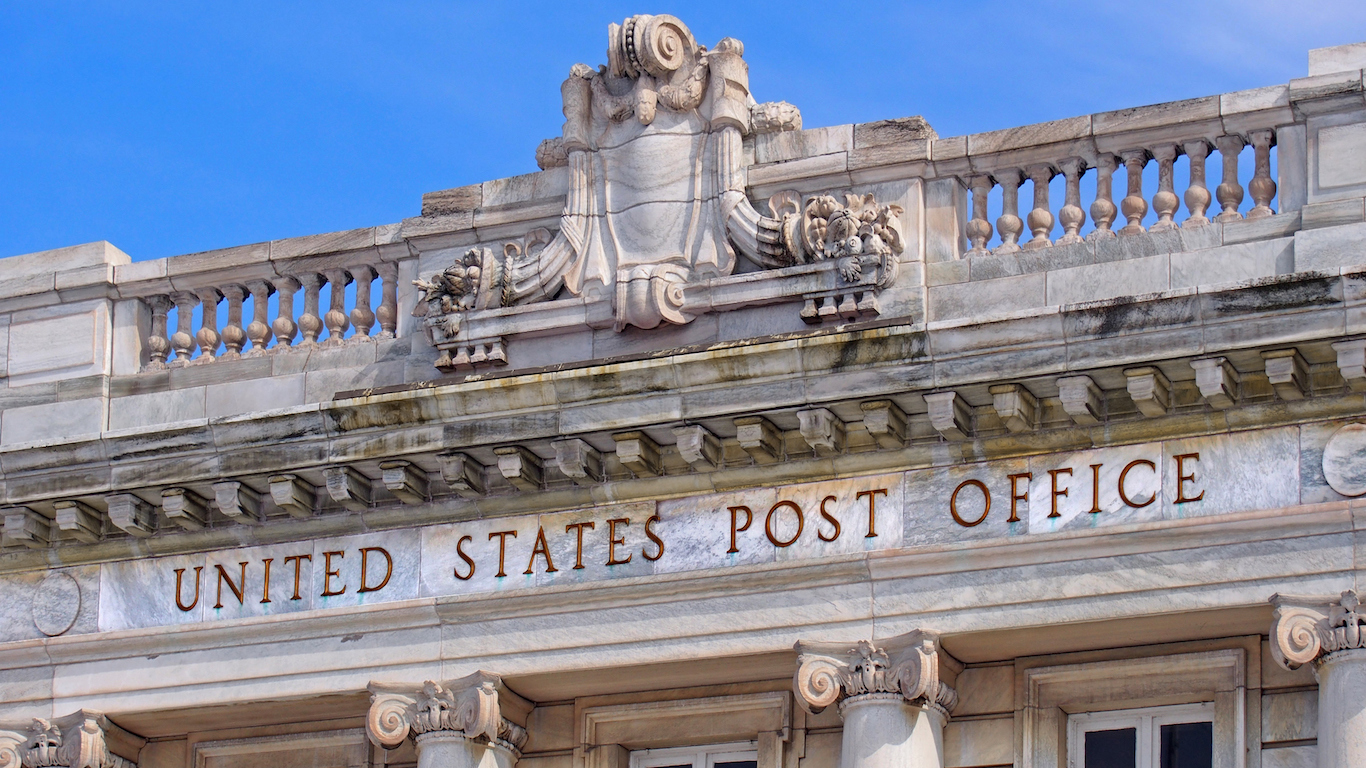Services
These Are the 20 Most Important Dates in the History of the Post Office

Published:
Last Updated:

The United States Postal Service (USPS) was founded in 1792 as the Post Office Department. One of the oldest parts of America’s government has been under siege recently. Years of losses have caused some politicians to question whether the USPS is necessary, or whether it should be a private enterprise. Most recently, there has been concern that cost cuts may make it difficult for the USPS to deliver ballots and then get those ballots to where they need to be counted before election day on November 3.
Decisions about the fate of the USPS are not easy. The idea that it could be replaced quickly is unrealistic, at least as long as virtually every address in America is to get mail every day, except Sunday. Even organizations like FedEx and UPS have nowhere near the number of offices, employees or trucks to move over 470 million pieces of mail per day.
The USPS is also one of the nation’s largest employers. Any decision about its future involves hundreds of thousands of jobs at a time when the job situation across the nation is already shaken and not in a rapid recovery. Moreover, jobs in a number of other industries rely on the regular delivery of items as diverse as retailer catalogs to magazines to bills.
The transformation of the post office from a small organization that delivered mail across 13 states to one of the largest organizations has had a number of milestones. Some have made it more efficient. Others have expanded its services. Other were technology advances, at least in their day.
Here are the 20 most important dates in the organization’s 245-year history:
1775: Benjamin Franklin appointed first Postmaster General by the Continental Congress
1847: U.S. postage stamps issued
1855: Prepayment of postage required
1860: Pony Express began
1863: Free city delivery began
1873: U.S. postal cards issued
1896: Rural free delivery began
1918: Scheduled airmail service began
1950: Residential deliveries reduced to one a day
1963: ZIP Code inaugurated
1971: United States Postal Service began operations
1971: Labor contract negotiated through collective bargaining, a federal government “first”
1974: Self-adhesive stamps tested
1983: ZIP+4 Code began
1992: Self-adhesive stamps introduced nationwide
1994: Postal Service public internet site launched
2006: Postal Accountability and Enhancement Act signed
2007: “Forever” stamp issued
2008: Competitive pricing for expedited mail began
2009: Free USPS.com iPhone app offered
The last few years made people forget how much banks and CD’s can pay. Meanwhile, interest rates have spiked and many can afford to pay you much more, but most are keeping yields low and hoping you won’t notice.
But there is good news. To win qualified customers, some accounts are paying almost 10x the national average! That’s an incredible way to keep your money safe and earn more at the same time. Our top pick for high yield savings accounts includes other benefits as well. You can earn up to 3.80% with a Checking & Savings Account today Sign up and get up to $300 with direct deposit. No account fees. FDIC Insured.
Click here to see how much more you could be earning on your savings today. It takes just a few minutes to open an account to make your money work for you.
Thank you for reading! Have some feedback for us?
Contact the 24/7 Wall St. editorial team.